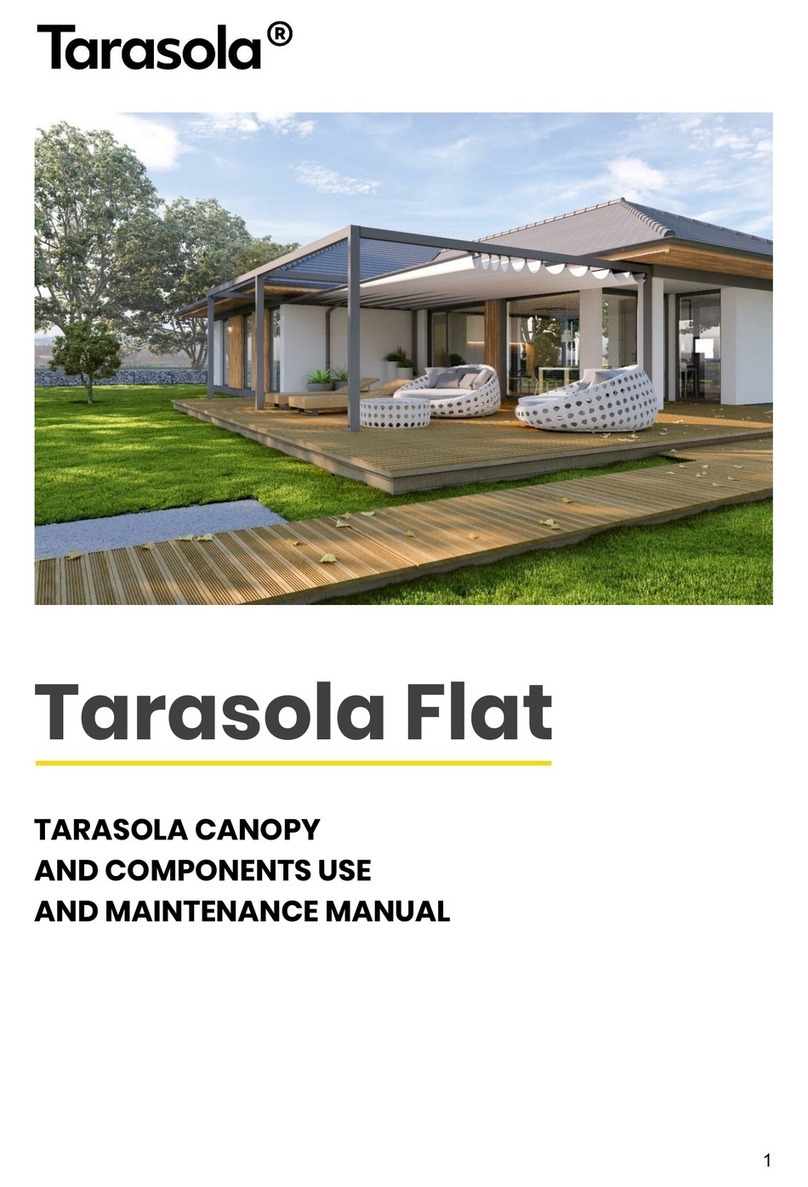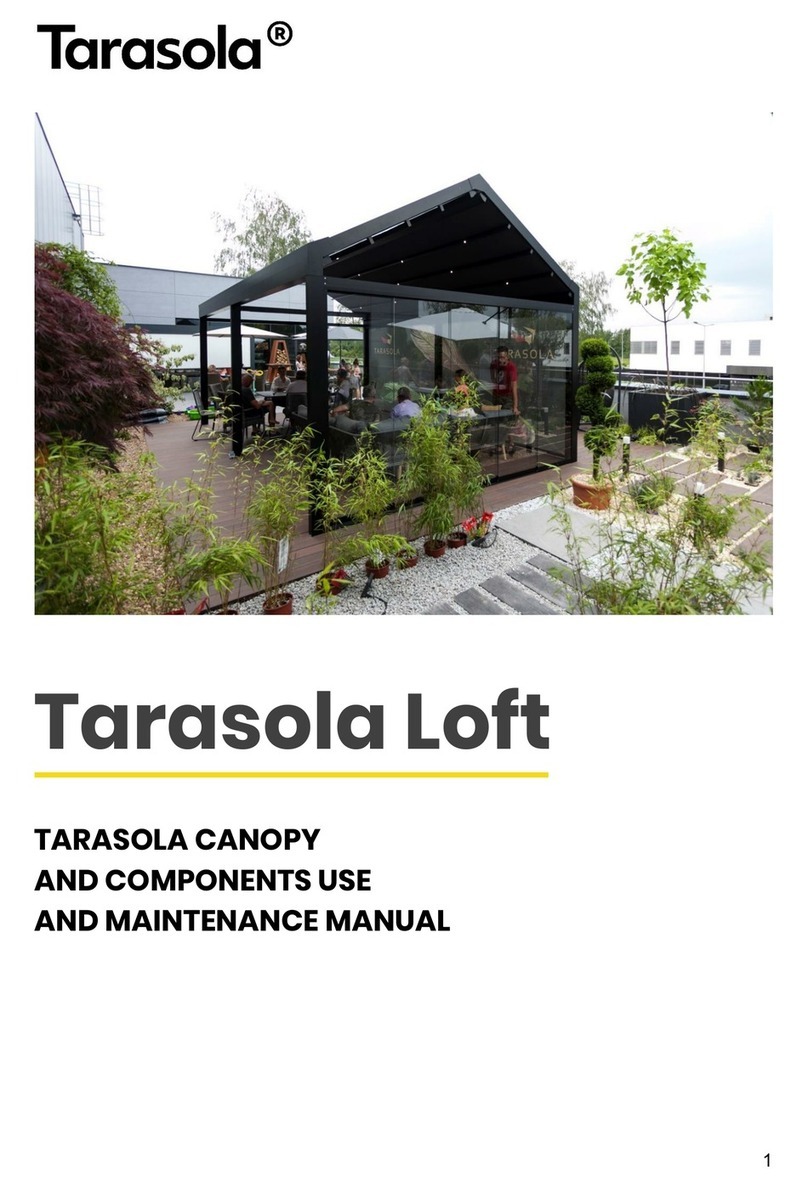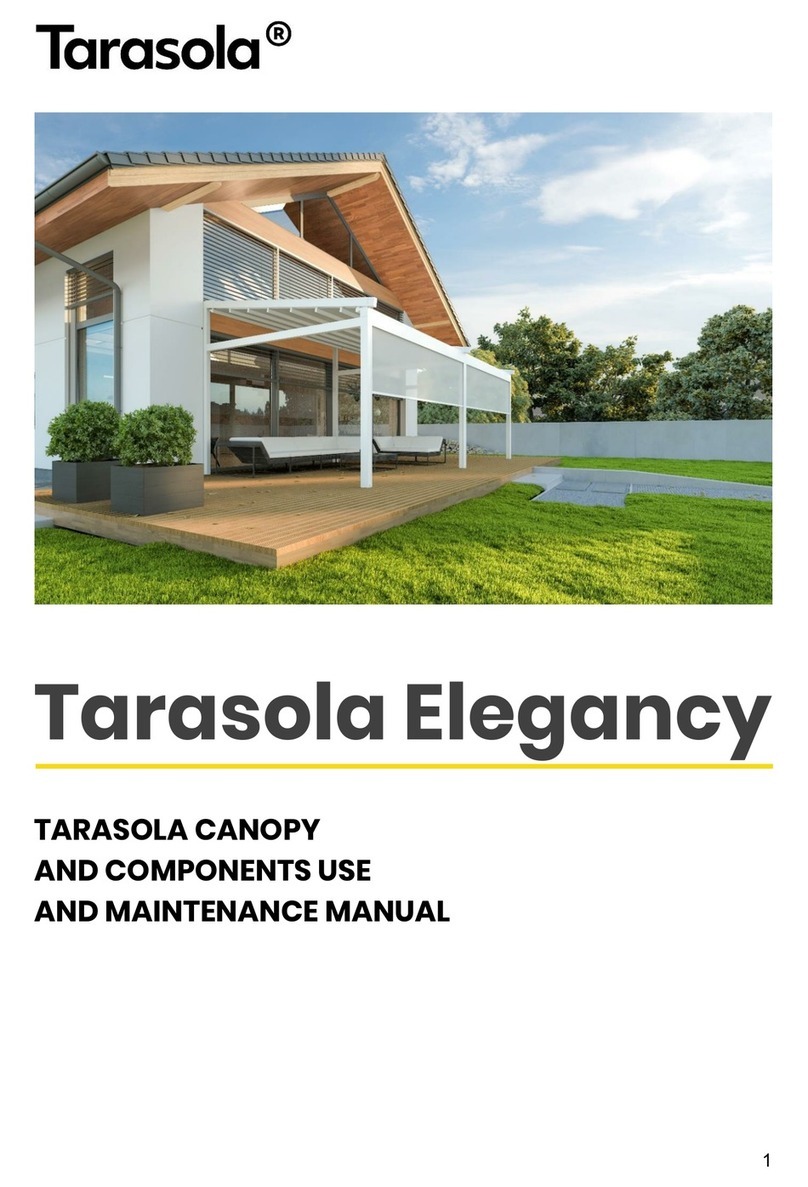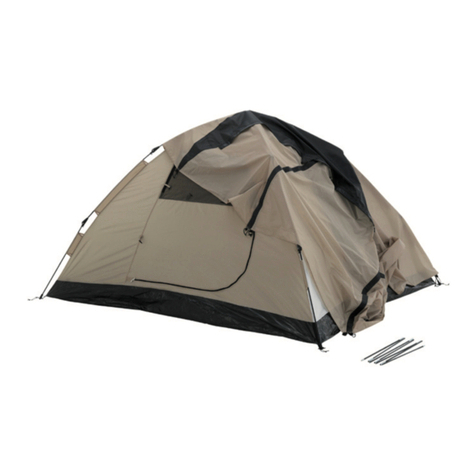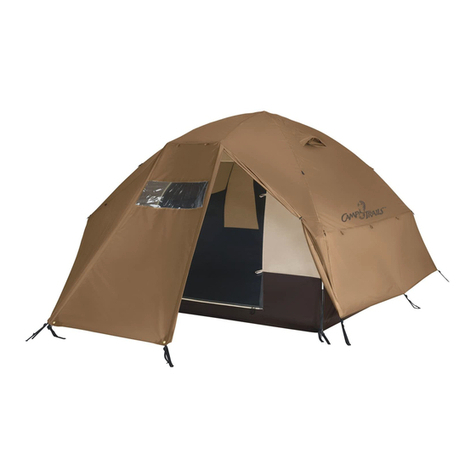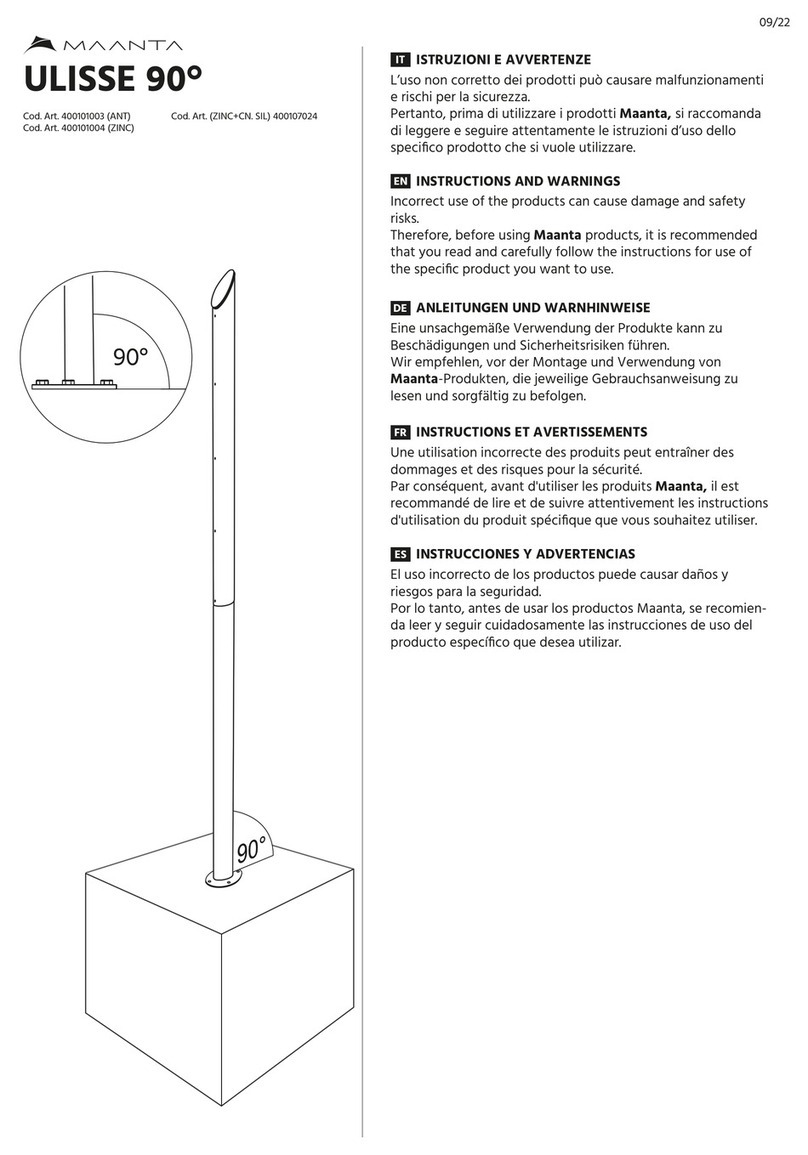9
imitating the fabric on the inside; anti-dust acrylic coating; fabric
weight: 850g/m²; fabric thickness: 0.5mm; fracture toughness approx.
250/250 DaN/5cm (ISO 1421), tear resistance approx. 25/20 DaN
(DIN 53363); 2nd fire resistance class M2 (NFP 92-507); allowed
temperature changes: -30/+70˚C; 100% watertight.
Cleaning and care: water, light detergent + soft cloth.
SOLTIS W96
1100 Dtex polyester with double-sided PVC coating; micro-perforated
PVC cover; shiny coating. Weight 620g/m2, tensile strength 220/220
daN/5cm (EN ISO 1421), tear resistance 25/20 daN (DIN 53.363),
thickness 0.56 mm, fire resistance: 1st class (UNI 9177-87), 2nd class
M2 (NFP 92-507); 100 % watertight.
Cleaning and care: water, light detergent + soft cloth.
SERGE 600 SOLAR
Fabric coated in fiberglass yarns, composition: 34% fiberglass, 48%
PVC, 18% laminate. Weight 645g/m2. The fabric blocks sunrays out
but retains transparency - translucency 3%; fire resistance: 1st class
(UNI 9177-87), 2nd class M2 (NFP 92-507); allowed temperature
changes: -30˚C/+70˚C, 100% watertight.
Cleaning and care: water, light detergent + soft cloth.
3.5 Limitations of the fabrics
Watertightness - acrylic fabrics are not watertight. They contain microscopic,
porous holes where the threads cross. External impregnation applied on
acrylic and polyester materials creates a protective layer against dirt, water,
and oily substances. During rainfall water drops run down easily when the
canopy is sloped. Weather and mechanical conditions gradually reduce the
effectiveness of the impregnation.
Rot resistance - the canopy fabrics are usually made of synthetic materials,
which do not contain any biodegradable substances. This, in turn, makes
them rot-proof. The accumulation of dirt and other naturally occurring
substances on the fabric surface, coupled with moisture, may create very
good conditions for fabric degradation. Folding of a damp fabric may have
an additional negative effect on the condition of the fabric and may cause
change in its color. It is important to let the fabric dry before folding it.
Creases – the cobweb effect: creases may form as a result of folding the
fabric, the "wrinkle" effect may, particularly when exposed to light, become
darker. This, however, does not affect the usability of the fabric and is not






